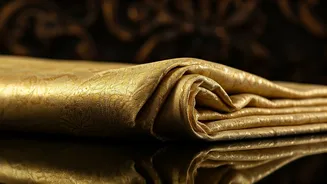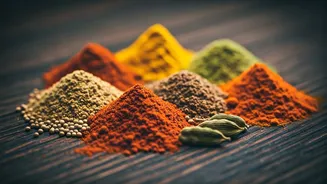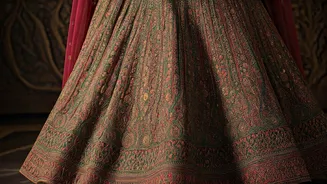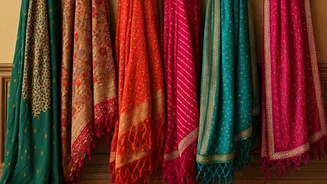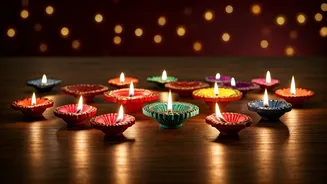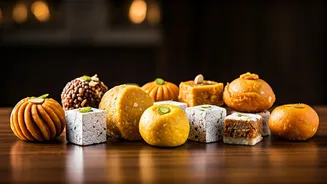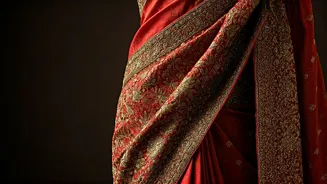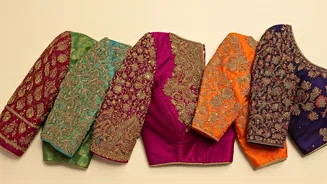Silk's Luxurious Touch
The first step in identifying a pure Banarasi saree is examining the fabric. Authentic Banarasi sarees are primarily made from high-quality silk, and the texture
is a key indicator. Genuine silk feels smooth, soft, and has a subtle sheen. When you rub the fabric, it should feel warm. Also, the saree should drape beautifully. This is a critical factor because pure silk sarees have a natural fall, unlike synthetic fabrics that might feel stiff or artificial. If the saree feels rough, scratchy, or shows any signs of synthetic materials, it’s probably not a genuine silk Banarasi saree. The weave should be tight and even, another sign of quality silk.
Weaving Techniques Decoded
The intricate weaving techniques are a defining characteristic of Banarasi sarees, so studying these patterns can help you determine authenticity. Look closely at the zari work – the metallic threads used in the designs. In genuine Banarasi sarees, the zari is made of real gold or silver, which is usually quite heavy and detailed. The patterns are usually quite complex, which is a key indicator of handloom weaving. You can often see the fine craftsmanship by checking the reverse side of the saree to see the meticulous detail. Handloom sarees usually have small imperfections, but that is part of their character. If the zari work looks flat or machine-made, the saree is likely a replica. The real value is in the detailed weaving.
Motifs and Their Meaning
Banarasi sarees feature diverse motifs, each carrying cultural significance. Familiarize yourself with these motifs to authenticate your saree. Common motifs include floral patterns, paisleys (kalka), and geometric designs. The type of motif and the way it is woven can reveal much about the saree's origin and authenticity. The motifs are often inspired by Mughal and Indian influences. When examining the saree, pay attention to the clarity and detail of the motifs. Authentic designs have sharp, well-defined edges, which is made possible by the skill of the weavers. Moreover, the density of the motifs also matters. The more intricate and detailed the motifs, the higher the craftsmanship.
Check the Border
The border of a Banarasi saree is often a key area where the quality and authenticity can be assessed. The border is a defining feature of the saree's design, often featuring complex patterns and zari work. Inspect the border carefully to ensure the work is consistent with the rest of the saree. In authentic sarees, the border is usually woven separately and then attached. A high-quality border features detailed designs and a neat finish. Additionally, observe how the border complements the body of the saree. The border should enhance the overall look and feel of the saree. Poorly finished borders with uneven patterns or loose threads could indicate a less authentic piece. Look at the reverse side of the border too; there, you should see the same level of detail.
Expert Verification
If you are unsure about the authenticity of a Banarasi saree, seeking expert verification is highly recommended. Consulting a reputable saree retailer or a textile expert can provide valuable insights. These experts can analyze the fabric, weaving, and design details to confirm the authenticity. They can also explain the history and cultural significance of the saree. When seeking expert advice, bring the saree along with any documentation such as purchase receipts or certificates of authenticity. The expert will have the skills and knowledge to identify any signs of imitation, giving you confidence in your investment. A professional opinion can also help you understand the value and care of your saree.
